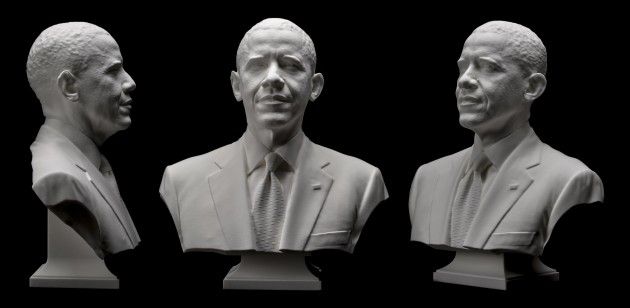Behind the Scenes: how the first 3D-printed portrait of President Obama was made

The first 3D printed presidential portraits created from 3-D scan data were displayed at the first-ever White House Maker Faire last June. The White House released a new video today showing you behind-the-scenes of Obama's 3D-face scanning session.
The Smithsonian-led team scanned the President earlier this year using two distinct 3-D documentation processes. Experts from the University of Southern California's Institute for Creative Technologies used their "Light Stage" system to document the President's face from ear to ear in high resolution. Next, a Smithsonian team used handheld 3-D scanners and traditional SLR cameras to record peripheral 3-D data to create an accurate bust.
"The system that we brought to be a part of this process is called our mobile light stage," explains Paul Debevec of USC Institute of Creative Technologies. "We're setting it up right now so it can be used to record almost certainly the highest resolution digital model that's been made of a head of state."
Their setup includes 50 custom-built LED lights, eight high resolution sports photography cameras, and additional six wide-range cameras. And in about one second, Obama is illuminated by 10 different lighting conditions which changes the polarization and directionality of the light and helps specialists capture all of the intricacies of his face.
The team proposed a scan of Obama about a year ago, and the White House agreed. Obama joined them for about 15 minutes in the White House. The actual scanning took about 5 minutes.

The data captured was post-processed by 3-D graphics experts at the software company Autodesk to create final high-resolution models. The life mask and bust were then printed using 3D Systems' Selective Laser Sintering printers.
Gunter Waibel, director of Smithsonian Digitization Program Office, explains that they were inspired by the plastered life masks of Abraham Lincoln which were direct taken from his likeness. They wanted to use modern day technologies and tools to create a "similarly authentic experience that connects us to history to a moment of time, and to a person's likeness."
"This isn't an artistic likeness of the president this is actually millions upon millions of measurements that create a 3D likeness of the president," Adam Metallo, the Smithsonian's 3D Digitization Program Officer explained.







